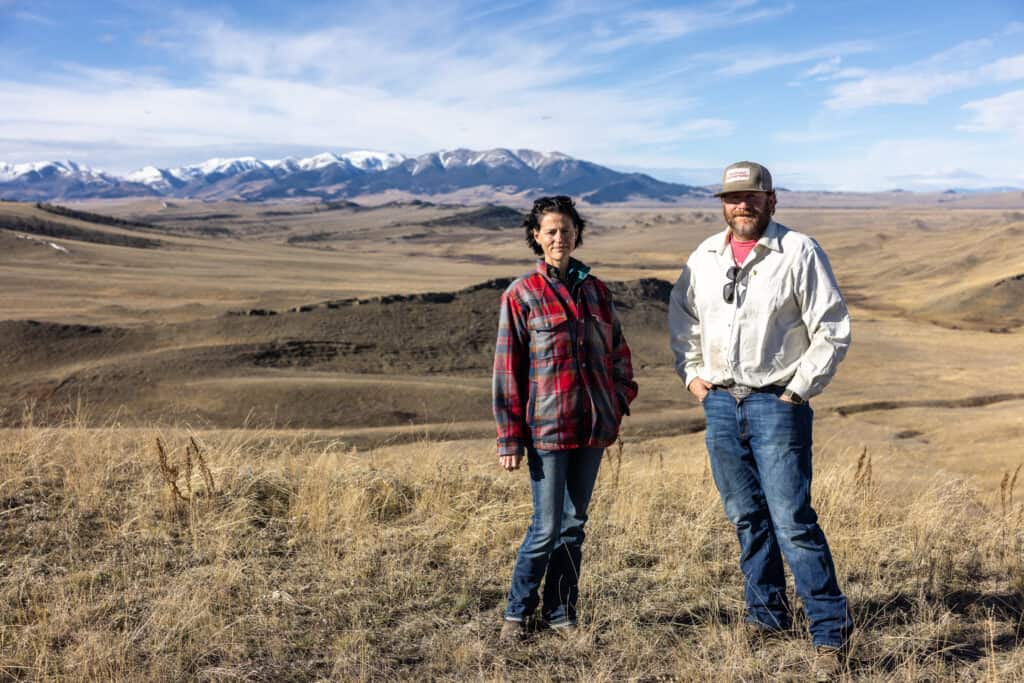
I’m always a fan of cool conservation technology.. from PERC
PERC is partnering with Montana’s McFarland White Ranch to help implement an innovative virtual fence project for cattle, a cutting-edge technology that could revolutionize both ranching and wildlife conservation.
The project will initially remove 16 of the ranch’s 75 miles of internal barbed-wire fencing and replace it with a virtual fence network that allows the rancher to remotely map and manage livestock through a series of signal towers and GPS collars worn by cows. Barbed wire fences are a key barrier to wildlife migration throughout the West. While other pilot projects and implementations are underway, this is the first to explicitly evaluate the technology for both migratory wildlife conservation and its effect on production agriculture—specifically, economic impact, range, and livestock benefits.
Under the agreement, PERC is funding key infrastructure to implement the virtual fence and clear a path for wildlife migration, including directly purchasing one of six signal towers needed to establish a signal across the virtual network.
Fences are trouble for wildlife and ranchers
Located at the doorstep of Montana’s Crazy Mountains, the McFarland White Ranch is home to 2,000 head of cattle, rough landscapes, and abundant wildlife. Thirty-two bird species of concern including Clark’s nutcracker, ferruginous hawk, thick-billed longspur, bobolink, sharp-tailed grouse, and sandhill cranes are found on the Audubon-certified ranch. Migratory wildlife including elk, deer, and pronghorn are also common, as well as predators such as wolves, mountain lions, and black bears.Wildlife including elk and pronghorn can get caught in traditional fences, birds often fatally collide with wires, and ecologically sensitive areas are difficult to fence off with any degree of flexibility.
Repairing barbed-wire fencing is a constant worry for ranchers as well.
How virtual fencing works:
Cattle are equipped with a GPS collar that emits a sound when the livestock approaches a virtual boundary, then a light shock if the animal crosses the boundary, which continues for several yards, effectively deterring cattle from entering the areas that the rancher has fenced off. Cattle need only a few days to learn that the sound from the collars means it is time to turn around.
Solar-powered signal towers connect across the virtual network. Each solar-powered tower covers roughly 10,000 acres of range, depending on topography, and costs approximately $12,000.
An app tracks the cattle’s location and sends alerts if the cattle attempt to leave the virtual fence boundary. The rancher can also adjust the boundaries directly from the app.
External fencing will be maintained to prevent commingling with neighboring herds and comply with Montana law.
Benefits for ranchers:
Virtual fencing significantly reduces the need for traditional barbed-wire fences, bringing notable benefits:The virtual system allows for easily customizable boundaries.
Ranchers can more easily track the location and status of their cattle, helping with predator control and herd management.
Removing bared-wire fences, which require costly and time-intensive repairs, can save ranchers considerable time and money.
And we can imagine tracking wolves at the same time, and maybe sending drones to scare them off..
I love it. It is so inspiring for me to watch the uses of new technology for such relevant purposes. I hope it develops into a corporate-type (read, widely and wisely used) program and helps America’s ranchers and farmers. Very cool.
Very respectfully,
That is a great application of GPS technology.
My French Brittany, as all Brittanies, has a tendency to explore. So I have a GPS hunting collar for her. It combines a GPS collar, with a shock collar as well as landownership maps on the control device.
She is so small that when on point in tall grass I have to bring out the control panel to find where she is on point. It does beep to tell me when she is on point.
My hunting buddies really appreciate this feature. While I am walking and looking at the screen to find her they get to shoot the bird when it finally flushes.
It would be great to get rid of unneeded fences on public land. I have so many ripped clothes!!!
My first thought was about the problems with cattle in riparian areas in the southwest (where maintaining fences to keep them out seems to be a big issue), but it might take more than a “light” shock to keep cows away from water. (You would also need the owners of the cows to care, and I think a lack of that is also a problem there.)
Curious about the success keeping cattle from riparian/streambanks when the surrounding lands have cured/dried?